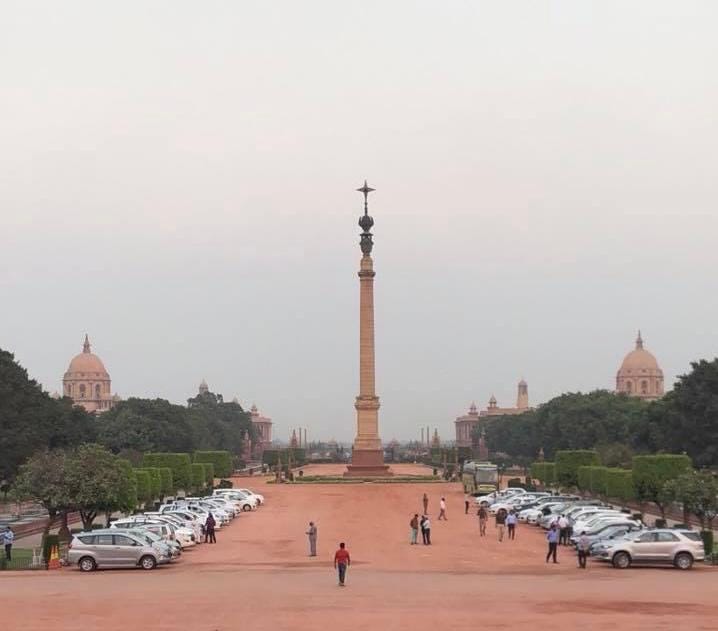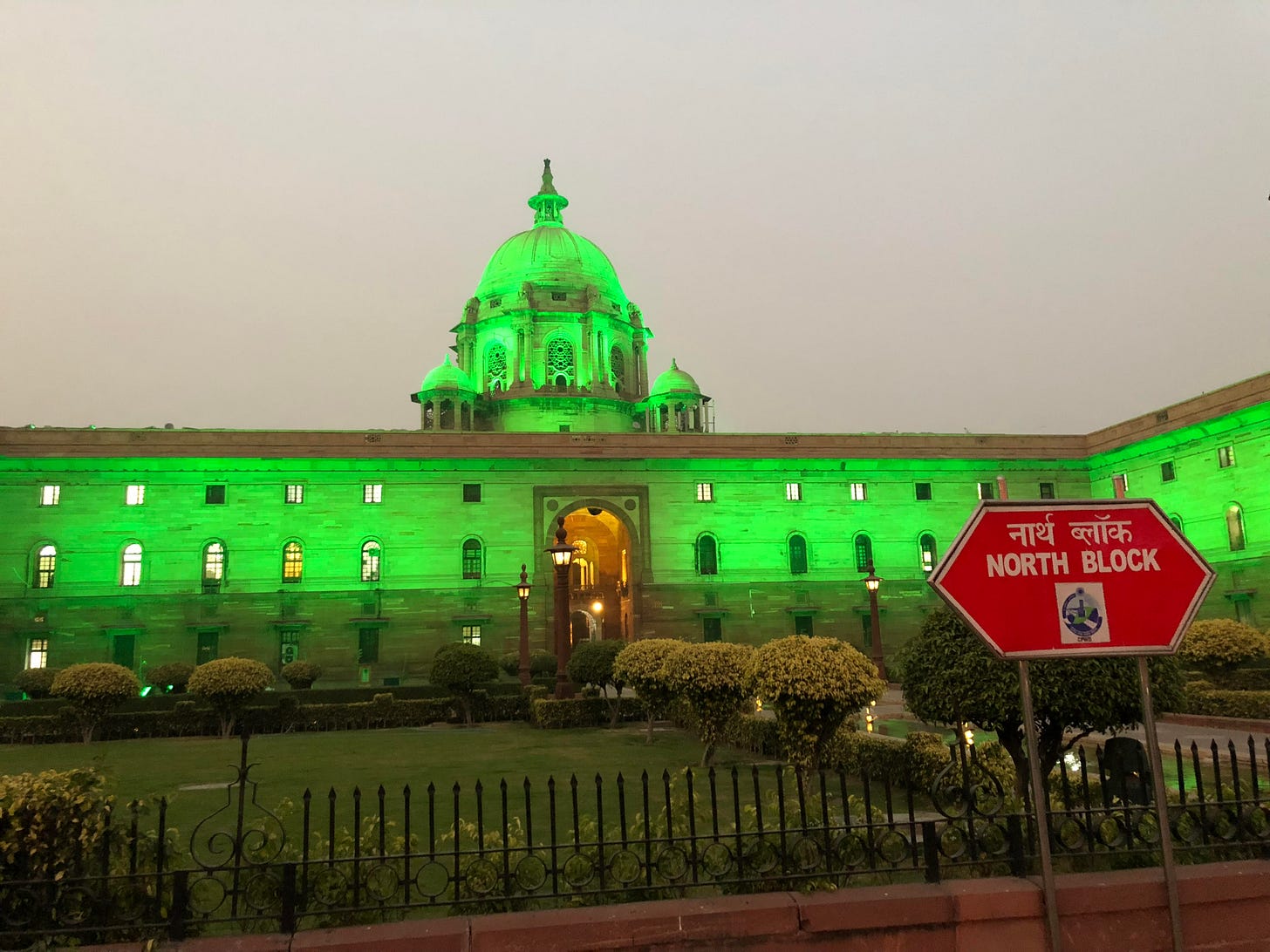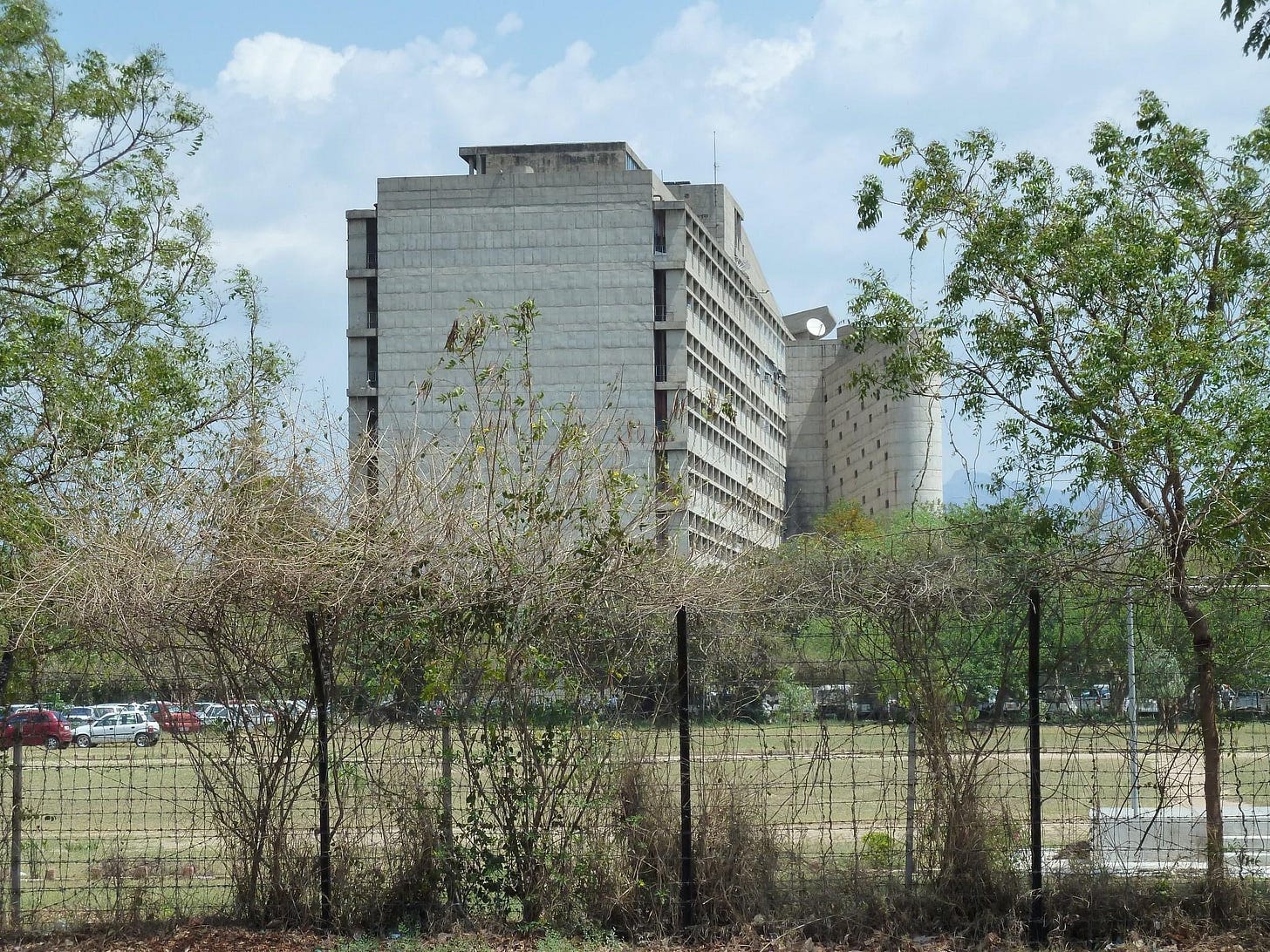Punjab and Haryana GST Revenue: Why the Yawning Gap?
Understanding Punjab's GST Collections: An In-Depth Analysis
GST— “One Nation, One Tax”
The Goods and Services Tax (GST) has revolutionised the taxation system in India, serving as a pivotal revenue stream for both Union and State governments. A Finance Ministry report dated 1st October, 2023 indicates a noteworthy 10% increase in national gross GST revenue for September 2023, totalling ₹1,62,712 crore1. Within this national framework, Punjab's performance stands out with a year-on-year growth rate of 23.34% for September and 10.37% for March—figures that outpace the national average. This ascent indicates that Punjab is on an upward trajectory, albeit from a smaller base—a turn of events for which the AAP government deserves credit, especially considering they inherited a system that was ailing, if not broken.
However, it's crucial to qualify this optimism. When compared in absolute terms with five other states—including the neighbouring states of Haryana, Chandigarh UT, NCT Delhi, as well as the industrially robust states of Gujarat and Tamil Nadu—Punjab's GST collections remain very significantly, if not alarmingly, poor. This article makes a humble attempt to offer a comprehensive analysis of the latest GST collection figures, capturing both nationwide and state-wise data up to September 2023, and drawing upon upon the Finance Ministry's similar press note issued in early April 20232.
Key Figures: National and State-wise
As we delve deeper into the intricacies of GST collection, it's essential to cull out key figures from the voluminous official data to offer a laser-sharp, Punjab-centric perspective. Below, we present essential statistics on national and state-wise GST revenues, highlighting both the progress and disparities across different regions for September and March 2023.
National Gross GST Revenue
September 2023: ₹1,62,712 crore
March 2023: ₹1,60,122 crore
Year-on-Year Increase: September (19.28%), March (14.39%)
State-wise Revenue (Figures in ₹ Crore)
Punjab: September (1,866), March (1,735), YoY Increase: September (23.34%), March (10.37%)
Haryana: September (6,732), March (7,780), YoY Increase: September (22.89%), March (16.93%)
Chandigarh: September (219), March (202), YoY Increase: September (21.67%), March (10.09%)
Delhi: September (3,855), March (4,840), YoY Increase: September (18.90%), March (17.72%)
Tamil Nadu: September (7,920), March (9,245), YoY Increase: September (17.53%), March (15.24%)
Gujarat: September (8,940), March (9,919), YoY Increase: September (15.22%), March (8.31%)
Analysis: Punjab in Perspective
Poor in Rich Neighbourhood
Although Punjab's year-on-year percentage growth in GST collections for September and March is praiseworthy—significantly outperforming the national average—these figures provide only a modicum of hope in an otherwise disheartening fiscal landscape. While the AAP government merits acknowledgment for catalysing a growth spurt, it would be remiss to overlook the absolute figures. These paint a more sobering picture, suggesting significant ground still needs to be covered to elevate Punjab's economic prospects.
The analysis becomes more disconcerting when contrasted with the state's more economically robust neighbours. Both Haryana and Delhi, which have smaller populations than Punjab, have generated much higher GST revenues. For instance, in September 2023, Haryana collected ₹6,732 crore, and Delhi accumulated ₹3,855 crore, making Punjab's ₹1,866 crore collection appear rather modest. In March 2023, the figures are similarly striking: Haryana's ₹7,780 crore, Delhi's ₹4,840 crore versus Punjab's ₹1,735 crore. This isn't merely a month-to-month aberration; other months recount a similar tale. The yawning gap is far from trivial; it raises pressing questions about Punjab's economic policy, governance, and investment environment, which have been shaped cumulatively by the successive governments over the past decades. The glaring disparity in revenue collection in comparison to its neighbours highlights an urgent need for Punjab to devise and implement more robust and pragmatic economic and governance strategies.
Key Factors Affecting Punjab’s GST Collections
If one were to consult an IAS officer or a State Finance Department mandrin for insights into this substantial gap in absolute GST figures between Punjab and its more prosperous neighbours, the explanation might touch upon various facets like the following:
Economic Size:
GDP and Industrial Output: Punjab's economy is relatively smaller and less industrialised compared to its neighbours.
Sectoral Composition:
Diverse Economy: The economic structure of Punjab is still heavily skewed towards agriculture, which remains largely exempt from GST, thus reducing the scope of revenue generation from this sector.
Trade and Commerce:
Commercial Centres: Punjab does not boast significant commercial or trading hubs in comparison to states like Delhi and Haryana, thereby affecting its GST collections adversely.
Administrative Efficiency:
Tax Administration: The efficiency or lack thereof in implementing GST could also play a crucial role in the state's revenue collections.
Demographics:
Affluence: Affluent states like Delhi and Haryana naturally have higher per capita incomes, thus contributing more towards GST revenue.
Unaccounted Money and Informal Economy:
Informal Transactions: A considerable part of Punjab's economic activity occurs in the informal sector, often going unreported, and thereby not contributing to its GST collections.
These Homilies Neither Impress Us Nor Convince Us
I'm afraid that such conventional wisdom won't quite satisfy our concerns. When it comes to the size of the economy, we may be missing the forest for the trees. The more pressing question is why Punjab, once an economic leader, has fallen behind, resulting in poor tax revenues. It's misleading to assert that Punjab's economic structure is heavily skewed towards agriculture. While 58% of the population might be directly or indirectly dependent on the primary sector, nearly 50% of the state's GDP comes from the services sector, which is typically subject to higher GST rates. Moreover, industry contributes a significant 25% to the state's GDP.
As for agriculture, it accounts for another 25% of the GDP, of which only 15% comes from crops such as wheat, paddy, and cash crops like cotton and sugarcane. The remaining 10% emanates from animal husbandry, including dairy production. Punjab boasts strong industrial centres like Ludhiana, Jalandhar, and Amritsar, with the latter serving as a hub for the entire Jammu and Kashmir region. Additionally, some of the best officers have traditionally been posted in the excise and taxation department, so lack of leadership or quality of manpower doesn't explain the GST collection shortfall.
While unaccounted money and the informal economy are part and parcel of the Indian economic landscape, it would be unfair to say that Punjab is disproportionately affected by these factors. Therefore, when the gap in collections between Punjab and Haryana is so stark, we must examine structural issues, rather than settling for trite explanations or assigning blame. We need to focus on long-term remedies, rather than merely diagnosing how Punjab arrived at this financial and economic juncture in the first place.
Preconceived Notions about Punjabis’ Consumption and the GST
While it's often said that Punjabis indulge in conspicuous consumption—from extravagant weddings to luxury SUVs—these perceptions don't reflect the reality for an average family in the state, especially those dependent on agriculture. These stereotypes contribute to a misleading narrative that high consumer spending should naturally result in higher GST collections for Punjab, a line of thinking that is fundamentally flawed. The fact is that many families in the state are struggling to make ends meet. Agriculture, once the backbone of the state's economy, has become less sustainable, and many families engaged in farming are barely able to cover their basic expenses. So, the assumption that high consumer spending would result in higher GST collection does not stand up to scrutiny, given the financial constraints of a significant segment of the population.
Similarly, the notion that GST predominantly benefits consumption-oriented states at the expense of those with a manufacturing base is an oversimplification. While GST is largely designed as a consumption-based tax, its architecture is complex and nuanced, impacting both production and consumption. It's applied at various stages of production, affecting not just end consumers but also producers and suppliers along the value chain. These intricacies make it challenging to reduce the impact of GST on states to simple binaries like "consumer states benefit more than producer states." The actual influence of GST on a state's revenue is shaped by a combination of factors such as economic policies, industrial output, and administrative efficiency. Therefore, both consumer and producer perspectives must be accounted for when evaluating the efficacy and impact of the GST system, especially in the context of Punjab's unique economic challenges.
Looking Ahead: a Challenging, not Impossible task
The marked year-on-year growth rate in Punjab's GST collections is indeed a silver lining, a sign that the state is making strides in the right direction. However, it's critical not to lose sight of the broader picture: the absolute numbers are still disconcertingly low when compared to economically vibrant neighbours like Haryana and Delhi. This stark contrast underscores a troubling reality—Punjab's economy is stagnating, and its consumers lack the purchasing power of their counterparts in neighbouring states. The commendable percentage increases in GST collection, while heartening, start from a low base and thus do not tell the entire story.
What Punjab needs now is a sustained, robust plan for investment—especially in value-added industries, start-ups, and sectors that can create a multitude of employment opportunities for its educated youth. While targeted subsidies are necessary for the most disadvantaged sections of society, an overarching culture of freebies will not serve as a long-term solution, particularly given the state's mounting public debt and the challenges facing its agricultural and rural economy, including but not limited to indebtedness. The focus should be on serious and sustained efforts to invest in transforming the economic landscape of Punjab. It's a challenging path ahead, but by no means an insurmountable one.
Thus, while we applaud the incremental strides Punjab has made in its GST collections, we must also recognise that there is much more ground to cover. These figures should act not as a point of complacency but as a catalyst for comprehensive, future-focused economic planning and policy-making. This approach will enable Punjab to not only catch up with its neighbours but potentially surpass them, thereby benefiting both the state and the nation at large. Given the existing political and bureaucratic leadership, along with the generally supportive stance of the Modi administration towards Punjab, the situation could well be turned around in a few years.
https://pib.gov.in/PressReleseDetail.aspx?PRID=1962701
https://pib.gov.in/PressReleasePage.aspx?PRID=1912850







In-depth analysis. 👍